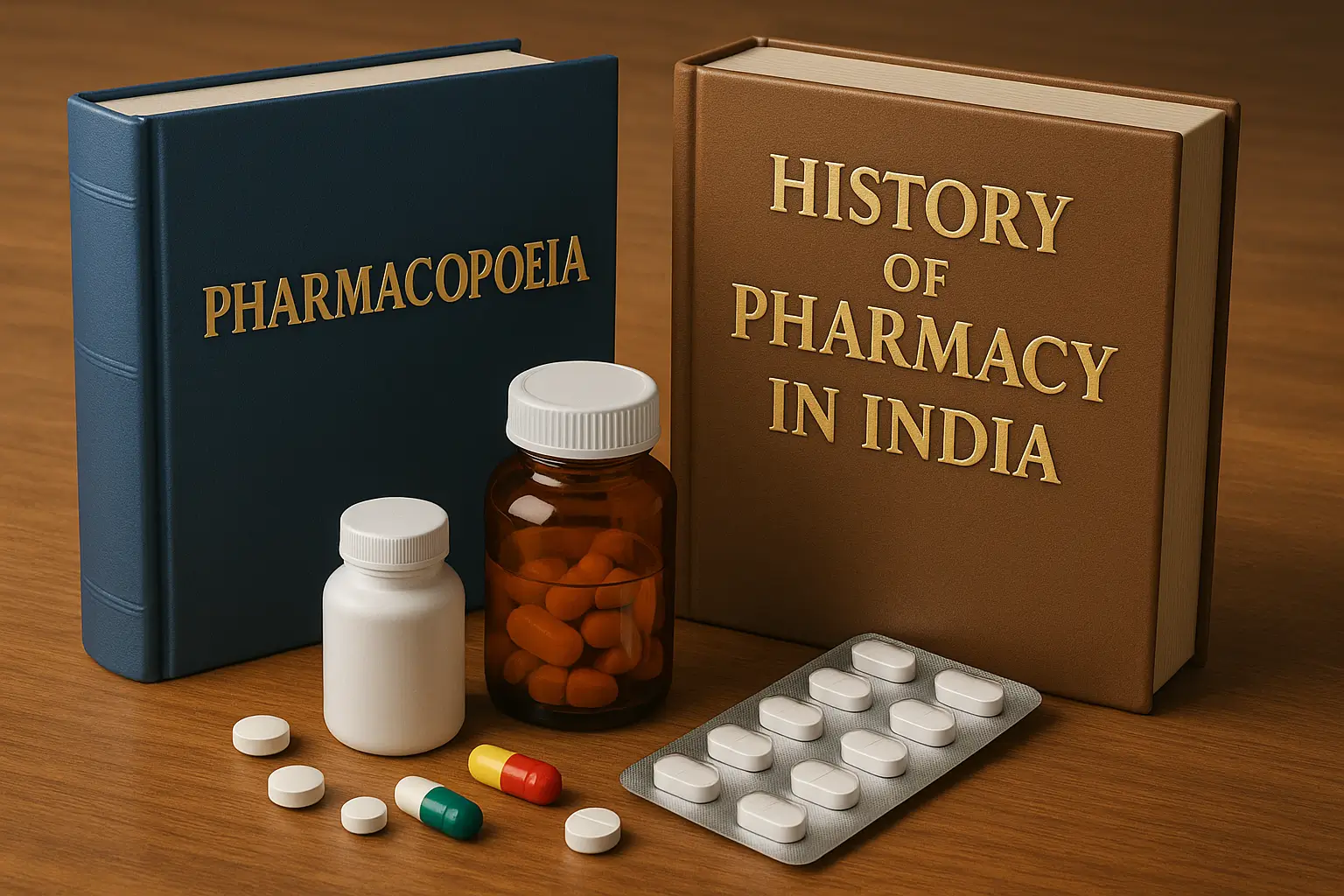- A pharmacopoeia is an authoritative collection of standards for the quality, purity, and strength of drugs, excipients, and dosage forms.
- It provides guidelines on the composition, preparation, storage, and labeling of pharmaceutical products.
- Pharmacopoeias are maintained by regulatory authorities and are essential references for pharmacists, chemists, and healthcare professionals.
History of Pharmacopoeia:
-
Early Compilations:
- Ancient texts such as De Materia Medica by Dioscorides (1st century AD) and Canon of Medicine by Avicenna (11th century AD) provided medicinal recipes and formulations.
-
First National Pharmacopoeias:
- The first official pharmacopoeia, the Dispensatorium (1546), was published in Nuremberg, Germany.
- Other notable early works include the Pharmacopoeia Londinensis (1618) and Pharmacopoeia Augustana (1629).
-
International Harmonization:
- Differences in standards led to confusion in global trade.
- In response, the International Pharmacopoeia was created in 1951 by the WHO to harmonize standards.
-
Modern Pharmacopoeias:
- Major pharmacopoeias today include the United States Pharmacopeia (USP), European Pharmacopoeia (Ph. Eur.), British Pharmacopoeia (BP), and Japanese Pharmacopoeia (JP).
- These are regularly updated to reflect scientific advancements.
History of Pharmacy in India
The history of the pharmacy profession in India can be divided into four key phases:
-
Ancient History:
- Rooted in traditional systems like Ayurveda, Siddha, and Unani.
- Texts such as Charaka Samhita and Sushruta Samhita detailed medicinal plants and preparation methods.
- Traditional healers (Vaidyas, Hakims) played a central role in medicine preparation.
-
Colonial Period:
- Under British rule, allopathic medicine was introduced.
- In 1863, the first pharmacy course was launched at Calcutta Medical College.
- Western and traditional medicine systems coexisted, marking the beginning of formal pharmacy education.
-
Post-Independence Period:
- After 1947, the Pharmacy Act of 1948 established the Pharmacy Council of India (PCI) to regulate education and the profession.
- In 1953, the first B. Pharm degree was introduced in Mumbai.
- The pharmaceutical industry grew with the Indian Patent Act (1970), allowing companies to produce generic drugs.
-
Modern Era:
- Economic liberalization in the 1990s attracted foreign investment, and India became a leading producer of generic medicines.
- Today, India is a major exporter of affordable medicines worldwide, and pharmacy education has expanded to include D.Pharm, M.Pharm, and Pharm.D programs.
Key organizations like the PCI, Indian Pharmaceutical Association (IPA), and NIPER play a vital role in shaping the industry
Click Here to Watch the Best Pharma Videos

